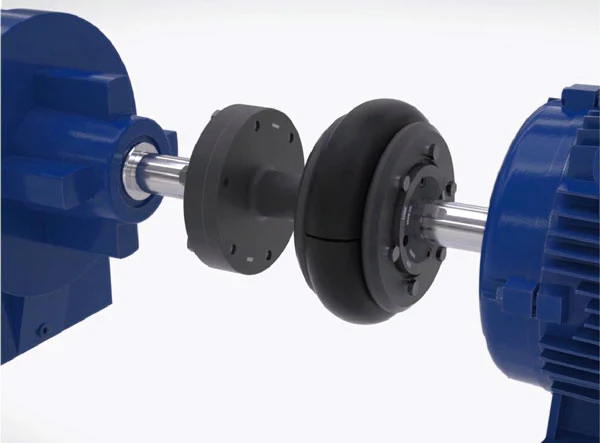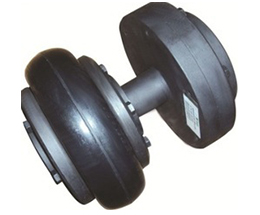Product Description
Propeller Shaft Coupling Vibrator for Magnetic Bracelet Water Couplings Flexible Chain Fluid Flange Stainless Steel Spacer
Application of Propeller Shaft Coupling
A propeller shaft coupling is a mechanical device that connects 2 shafts together. It is used to transmit torque and rotation between the shafts. Propeller shaft couplings are used in a variety of applications, including:
- Marine. Propeller shaft couplings are used in marine applications to connect the engine to the propeller.
- Industrial. Propeller shaft couplings are used in industrial applications to connect different pieces of equipment together.
- Agricultural. Propeller shaft couplings are used in agricultural applications to connect the engine to the driveline.
- Off-highway. Propeller shaft couplings are used in off-highway applications to connect the engine to the driveline.
- Other. Propeller shaft couplings are used in a variety of other applications, such as wind turbines and conveyor belts.
There are a variety of different types of propeller shaft couplings, each with its own advantages and disadvantages. The type of coupling that is best for a particular application will depend on the specific requirements of that application.
Here are some of the advantages of using propeller shaft couplings:
- They can transmit high torque and rotation.
- They are durable and can withstand a variety of harsh conditions.
- They are easy to install and maintain.
- They are available in a variety of sizes and styles to fit different applications.
Here are some of the disadvantages of using propeller shaft couplings:
- They can be expensive.
- They can be difficult to align properly.
- They can wear out over time.
Overall, propeller shaft couplings are a versatile and reliable way to connect 2 shafts together. They are used in a variety of applications and can be a valuable asset in any fleet.
/* January 22, 2571 19:08:37 */!function(){function s(e,r){var a,o={};try{e&&e.split(“,”).forEach(function(e,t){e&&(a=e.match(/(.*?):(.*)$/))&&1
| Standard Or Nonstandard: | Standard |
|---|---|
| Shaft Hole: | 19-32 |
| Torque: | >80N.M |
| Bore Diameter: | 19mm |
| Speed: | 4000r/M |
| Structure: | Flexible |
| Samples: |
US$ 9999/Piece
1 Piece(Min.Order) | |
|---|



How Does a Spacer Coupling Protect Connected Equipment from Shock Loads and Vibrations?
Spacer couplings play a vital role in protecting connected equipment from shock loads and vibrations in mechanical systems. They act as a buffer between the driving and driven components, absorbing and mitigating the impact of sudden shocks and vibrations. Here’s how spacer couplings provide this protection:
1. Dampening Effect: Spacer couplings are designed with flexible elements or materials that possess inherent damping properties. When subjected to shock loads or vibrations, these flexible elements absorb and dissipate the kinetic energy, reducing the impact on the connected equipment. This dampening effect helps prevent damage to delicate components and extends the equipment’s lifespan.
2. Misalignment Compensation: In addition to damping, spacer couplings can also accommodate certain degrees of angular, parallel, and axial misalignment between the shafts. When misalignment occurs, the coupling’s flexibility allows it to adjust slightly, reducing the transmitted forces to the connected equipment. By minimizing the effects of misalignment, spacer couplings help avoid excessive forces that could lead to shock loads and vibrations.
3. Vibration Isolation: Vibrations can be generated by various sources, including unbalanced loads, motor vibrations, and external factors. Spacer couplings, with their flexible elements, act as vibration isolators, preventing the propagation of vibrations from one shaft to the other. This isolation protects the connected equipment from experiencing detrimental vibrations that may lead to wear, fatigue, or failure.
4. Torsional Stiffness: While spacer couplings offer flexibility to absorb shock loads and vibrations, they also possess adequate torsional stiffness. This property helps maintain shaft alignment and synchronization during normal operation, reducing the risk of additional vibrations caused by misalignment or torsional forces.
5. Material Selection: Spacer couplings are often manufactured from materials with excellent fatigue and shock resistance properties, such as steel or aluminum alloys. The choice of materials ensures that the coupling can withstand repeated shock loads without experiencing premature fatigue or failure.
6. Redundancy and Reliability: In critical applications where shock loads and vibrations are common, some designs incorporate multiple flexible elements or redundancies to enhance the coupling’s reliability and capacity to handle extreme conditions.
Overall, spacer couplings are essential components in mechanical systems that require protection against shock loads and vibrations. Their ability to dampen, isolate, and compensate for misalignment helps maintain the health and longevity of connected equipment, ensuring smooth and reliable operation in various industrial settings.

How Does a Spacer Coupling Handle Angular, Parallel, and Axial Misalignment?
A spacer coupling is a type of flexible coupling that is designed to accommodate different types of misalignment between shafts. Here’s how it handles angular, parallel, and axial misalignment:
1. Angular Misalignment: Angular misalignment occurs when the axes of the two shafts are not parallel but intersect at a certain angle. A spacer coupling can handle angular misalignment by allowing the flexible element (such as an elastomeric or metallic component) to flex and bend when the shafts are not perfectly aligned. This bending action allows the coupling to compensate for the angular displacement between the shafts and transmit torque smoothly.
2. Parallel Misalignment: Parallel misalignment occurs when the axes of the two shafts are parallel but are offset laterally. A spacer coupling can handle parallel misalignment by virtue of its design. The spacer element (a cylindrical piece that connects the two coupling halves) provides the required lateral space between the shafts. This space allows the shafts to have a slight offset without inducing excessive stress on the machinery, thereby minimizing the risk of premature wear or failure.
3. Axial Misalignment: Axial misalignment occurs when the two shafts move closer together or farther apart along their axis. Some spacer couplings may have limited axial movement capabilities, which can help accommodate slight axial misalignment. However, it’s essential to ensure that the axial displacement is within the coupling’s specified limits to avoid overloading the coupling or the connected equipment.
Overall, spacer couplings are designed to be flexible and provide some degree of misalignment accommodation, but their ability to handle misalignment depends on their specific design and material properties. It’s essential to select the appropriate type and size of spacer coupling based on the expected misalignment and operational requirements of the machinery to ensure optimal performance and longevity of the coupling and the connected components.


editor by CX 2024-03-12